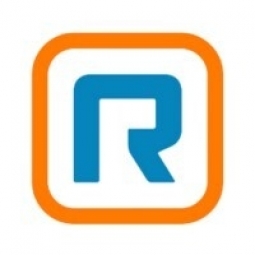Applicable Industries
- Healthcare & Hospitals
- Telecommunications
Applicable Functions
- Quality Assurance
- Sales & Marketing
Use Cases
- Inventory Management
- Personnel Tracking & Monitoring
Services
- Cloud Planning, Design & Implementation Services
- System Integration
About The Customer
BACTES is a leading company in the healthcare industry, specializing in fulfilling medical record requests for thousands of healthcare providers across the United States. The company provides Release of Information (ROI) services, including remote, mobile, and on-site ROI services, billing office workflow efficiencies, EHR chart indexing, medical record scanning, and audit and review services. BACTES operates in 40 states, providing secure electronic exchange, delivery, and integration of Protected Health Information (PHI) to insurance companies, attorneys, government agencies, and other parties that require patient healthcare information. The company, founded in 1991, is headquartered in San Diego, CA, and is part of a larger parent company, Sharecare, which has a total of 2,000 employees.
The Challenge
BACTES, a leading provider of medical record requests for healthcare providers across the US, was facing a significant challenge with its outdated on-premise phone system. The system, which was over a decade old, lacked scalability and many basic features that were critical to their business. This was a significant issue as BACTES provides Release of Information (ROI) services for healthcare facility clients in 40 states, ensuring secure electronic exchange, delivery, and integration of Protected Health Information (PHI). The company needed a solution that could handle the high demands of their operations and comply with federal and state regulations regarding the handling and transmission of PHI.
The Solution
BACTES turned to RingCentral, a cloud communications platform, to address their challenges. RingCentral provided BACTES with an enterprise-grade solution that was scalable and equipped with the necessary features for their operations. BACTES also implemented RingCentral Meetings, a cloud video conferencing solution that enhanced workforce collaboration. This allowed BACTES executives and employees to have productive virtual meetings as frequently as necessary. Additionally, RingCentral Contact Center was implemented, providing comprehensive analytics and reporting capabilities. This solution, integrated with RingCentral Office, provided the insights needed to ensure high-quality and efficient customer service performance.
Operational Impact

Case Study missing?
Start adding your own!
Register with your work email and create a new case study profile for your business.
Related Case Studies.

Case Study
Hospital Inventory Management
The hospital supply chain team is responsible for ensuring that the right medical supplies are readily available to clinicians when and where needed, and to do so in the most efficient manner possible. However, many of the systems and processes in use at the cancer center for supply chain management were not best suited to support these goals. Barcoding technology, a commonly used method for inventory management of medical supplies, is labor intensive, time consuming, does not provide real-time visibility into inventory levels and can be prone to error. Consequently, the lack of accurate and real-time visibility into inventory levels across multiple supply rooms in multiple hospital facilities creates additional inefficiency in the system causing over-ordering, hoarding, and wasted supplies. Other sources of waste and cost were also identified as candidates for improvement. Existing systems and processes did not provide adequate security for high-cost inventory within the hospital, which was another driver of cost. A lack of visibility into expiration dates for supplies resulted in supplies being wasted due to past expiry dates. Storage of supplies was also a key consideration given the location of the cancer center’s facilities in a dense urban setting, where space is always at a premium. In order to address the challenges outlined above, the hospital sought a solution that would provide real-time inventory information with high levels of accuracy, reduce the level of manual effort required and enable data driven decision making to ensure that the right supplies were readily available to clinicians in the right location at the right time.

Case Study
Gas Pipeline Monitoring System for Hospitals
This system integrator focuses on providing centralized gas pipeline monitoring systems for hospitals. The service they provide makes it possible for hospitals to reduce both maintenance and labor costs. Since hospitals may not have an existing network suitable for this type of system, GPRS communication provides an easy and ready-to-use solution for remote, distributed monitoring systems System Requirements - GPRS communication - Seamless connection with SCADA software - Simple, front-end control capability - Expandable I/O channels - Combine AI, DI, and DO channels

Case Study
Driving Digital Transformations for Vitro Diagnostic Medical Devices
Diagnostic devices play a vital role in helping to improve healthcare delivery. In fact, an estimated 60 percent of the world’s medical decisions are made with support from in vitrodiagnostics (IVD) solutions, such as those provided by Roche Diagnostics, an industry leader. As the demand for medical diagnostic services grows rapidly in hospitals and clinics across China, so does the market for IVD solutions. In addition, the typically high cost of these diagnostic devices means that comprehensive post-sales services are needed. Wanteed to improve three portions of thr IVD:1. Remotely monitor and manage IVD devices as fixed assets.2. Optimizing device availability with predictive maintenance.3. Recommending the best IVD solution for a customer’s needs.

Case Study
HaemoCloud Global Blood Management System
1) Deliver a connected digital product system to protect and increase the differentiated value of Haemonetics blood and plasma solutions. 2) Improve patient outcomes by increasing the efficiency of blood supply flows. 3) Navigate and satisfy a complex web of global regulatory compliance requirements. 4) Reduce costly and labor-intensive maintenance procedures.









